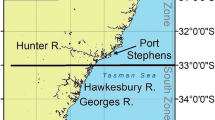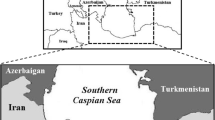Abstract
Objective
The macula lagena in birds is located at the apical end of the cochlea and contains many tiny otoliths. The macula lagena is innervated and has neural projections to the brainstem, but its physiological function is still unclear. It remains disputable that it is because otoliths in the lagena are rich in elements Fe and Zn that birds can obtain geomagnetic information for homing. To clarify this issue, we carried out a study to determine whether or not otoliths in the lagena of homing pigeons are richer in magnetic elements than those in the saccule and the utricle.
Methods
The contents of ferromagnetic elements (Fe, Co, Ni) and other metal elements in lagenal otoliths of adult homing pigeons were precisely analyzed with inductively coupled plasma mass spectrometry (ICP-MS) of high sensitivity, and then they were compared with those in saccular and utricular otoliths (all the contents were normalized to Ca).
Results
In adult homing pigeons, the contents of ferromagnetic elements (Fe, Co, Ni) in lagenal otoliths were less than 0.7% (normalized to Ca element) and were the same order in magnitude as those in saccular and utricular otoliths. The content of Fe in lagenal otoliths was not significantly different from that in utricular otoliths and was even lower than that in saccular otoliths. The content of Co in lagenal otoliths was lower than that in saccular otoliths and higher than that in utricular otoliths. The content of Ni in lagenal otoliths was not significantly different from that in saccular otoliths and was higher than that in utricular otoliths. The contents of other metal elements Na, Mg, K, Al, Mn and Pb in lagenal otoliths were not significantly different from those in utricular and saccular otoliths. The contents of metal elements Zn, Ba and Cu in lagenal otoliths were lower than those in saccular otoliths.
Conclusion
The contents of magnetic elements in lagenal otoliths of homing pigeons are not much higher than those in utricular and saccular otoliths, which does not support the hypothesis that birds depend on high contents of Fe and Zn in lagenal otoliths for sensation of geomagnetic information. Similarities in morphology, element ingredient and element content between lagenal otoliths and utricular otoliths suggest that the two types of otolithic organs may play similar roles in sensing gravitational and acceleration signals.
摘要
目的
鸟类瓶状囊器官位于耳蜗的顶端, 含有耳石并有神经支配, 但其功能尚不清楚。 有人认为瓶状囊的耳石中Fe、 Zn等元素含量较高, 使得鸟类能够感受地球磁场而具有导航能力, 但对于这个假说目前还存在争议。 为澄清这个争议, 本研究分析成年信鸽瓶状囊耳石磁性元素的含量是否比内耳球囊和椭圆囊耳石更丰富。
方法
应用具有高灵敏度和稳定性的电感耦合等离子体质谱法(ICP-MS)测定成年信鸽瓶状囊耳石样品中磁性元素Fe、 Co、 Ni以及其它金属元素的含量(以Ca含量作为基准的百分比含量)并同内耳的球囊和椭圆囊耳石中的这些元素的含量进行比较。
结果
成年信鸽瓶状囊耳石中磁性元素 Fe、 Co、 Ni的含量不足 Ca元素的0.7%, 与球囊和椭圆囊耳石中的含量为同一数量级。 瓶状囊耳石中Fe的含量与椭圆囊耳石相比无显著性差异且低于球囊耳石; 瓶状囊耳石中Co的含量低于球囊耳石, 但高于椭圆囊耳石; 瓶状囊耳石中Ni的含量与球囊相比无显著性差异, 但高于椭圆囊耳石。 瓶状囊耳石中其它金属元素Na、 Mg、 K、 Al、 Mn、 Pb的含量与球囊和椭圆囊耳石相比无显著性差异, 但Zn、 Ba、 Cu的含量低于球囊耳石。
结论
结果表明成年信鸽瓶状囊耳石中磁性元素的含量极低而且不比内耳球囊和椭圆囊耳石更丰富, 从而不支持信鸽因其瓶状囊耳石中含有较高的Fe、 Zn等元素而能够感受地球磁场这一假说。 信鸽瓶状囊的耳石与椭圆囊的耳石在形态、 元素组成及含量水平上具有相似性, 提示这两种耳石器官可能在感受重力和加速度信号中共同起作用。
Similar content being viewed by others
References
Harada Y, Shirane M, Tagashira N, Suzuki M. Action potential of isolated frog utricle. Acta oto-laryngologica 1984, 406: 143–148.
Campana SE. Otolith science entering the 21st century. Mar and Freshw Res 2005, 56: 485–495.
Paige GD. Otolith function: basis for modern testing. Ann N Y Acad Sci 2002, 956: 314–323.
Riley BB, Moorman SJ. Development of utricular otoliths, but not saccular otoliths, is necessary for vestibular function and survival in zebrafish. J Neurobiol 2000, 43: 329–337.
Lu Z, Xu Z. Effects of saccular otolith removal on hearing sensitivity of the sleeper goby (Dormitator latifrons). J Comp Physiol A Neuroethol Sens Neural Behav Physiol 2002, 188: 595–602.
Carey J, Amin N. Evolutionary changes in the cochlea and labyrinth: Solving the problem of sound transmission to the balance organs of the inner ear. Anatomical Record Part a-Discoveries in Molecular Cellular and Evolutionary Biology 2006, 288A: 482–489.
Ladhams A, Pickles JO. Morphology of the monotreme organ of Corti and macula lagena. J Comp Neurol 1996, 366: 335–347.
Khorevin VI. The Lagena (the Third Otolith Endorgan in Vertebrates). Neurophysiology 2008, 40: 142–159.
Li CX, Gong M, Huang YN, Tang ZQ, Chen L. Morphometry of otoliths in chicken macula lagena. Neurosci Lett 2006, 404: 83–86.
Boord RL, Karten HJ. The distribution of primary lagenar fibers within the vestibular nuclear complex of the pigeon. Brain Behav Evol 1974, 10: 228–235.
Khorevin VI. Central projections of the lagena (the third otolith endorgan of the inner ear) in the pigeon. Neurophysiology 2008, 40: 167–177.
Gould JL. The map sense of pigeons. Nature 1982, 296: 205–211.
Wiltschko W. Compasses used by birds. Comp Biochem Physiol A 1983, 76: 709–717.
Harada Y, Taniguchi M, Namatame H, Iida A. Magnetic materials in otoliths of bird and fish lagena and their function. Acta oto-laryngologica 2001, 121: 590–595.
Wallraff HG. Homing of pigeons after extirpation of their cochleae and lagenae. Nat New Biol 1972, 236: 223–224.
Kittel C. Introduction to Solid State Physics. 7th Edition, New York: John Wiley & Sons, Inc, 1996: 1–688.
Patterson JD, Bailey BC. Solid-State Physics: Introduction to the Theory. Berlin: Springer, 2007: 1–717.
Ammann AA. Inductively coupled plasma mass spectrometry (ICP MS): a versatile tool. J Mass Spectrom 2007, 42: 419–427.
Lobinski R, Moulin C, Ortega R. Imaging and speciation of trace elements in biological environment. Biochimie 2006, 88: 1591–1604.
Campana SE, Chouinard GA, Hanson JM, Frechet A, Brattey J. Otolith elemental fingerprints as biological tracers of fish stocks. Fisheries Research 2000, 46: 343–357.
Campana SE, Thorrold SR, Jones CM, Gunther D, Tubrett M, Longerich H et al. Comparison of accuracy, precision, and sensitivity in elemental assays of fish otoliths using the electron microprobe, proton-induced X-ray emission, and laser ablation inductively coupled plasma mass spectrometry. Can J Fish Aquat Sci 1997, 54: 2068–2079.
Fleissner G, Holtkamp-Rotzler E, Hanzlik M, Winklhofer M, Petersen N, Wiltschko W. Ultrastructural analysis of a putative magnetoreceptor in the beak of homing pigeons. J Comp Neurol 2003, 458: 350–360.
Mora CV, Davison M, Wild JM, Walker MM. Magnetoreception and its trigeminal mediation in the homing pigeon. Nature 2004, 432: 508–511.
Manley GA, Haeseler C, Brix J. Innervation patterns and spontaneous activity of afferent-fibers to the lagenar macula and apical basilar papilla of the chick’s cochlea. Hear Res 1991, 56: 211–226.
Author information
Authors and Affiliations
Corresponding author
Rights and permissions
About this article
Cite this article
Zhao, Y., Huang, YN., Shi, L. et al. Analysis of magnetic elements in otoliths of the macula lagena in homing pigeons with inductively coupled plasma mass spectrometry. Neurosci. Bull. 25, 101–108 (2009). https://doi.org/10.1007/s12264-009-0311-y
Received:
Published:
Issue Date:
DOI: https://doi.org/10.1007/s12264-009-0311-y
Keywords
- homing pigeons
- lagena
- otolith
- magnetic element
- saccule
- utricle
- inductively coupled plasma mass spectrometry




